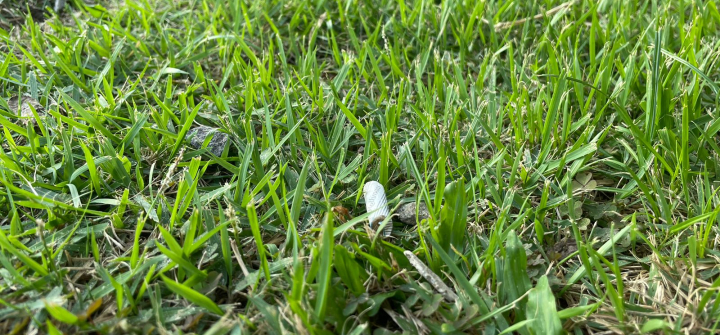Cigarette Butts: Toxic Threat and Tobacco Control Opportunity
About 4.5 trillion cigarette butts are improperly discarded each year, making them an unsightly reality of our daily lives.
They represent a dangerous environmental threat and ubiquitous advertising value for tobacco brands—but also provide evidence that can inform tobacco research and control.
Cigarette butts (the small, unburned portion of a smoked cigarette) are the main litter item generated globally, with roughly 80% of smoked cigarettes ending up on streets, sidewalks, rivers, beaches, and oceans. They contain thousands of chemicals; hundreds of which—including metals, polycyclic aromatic hydrocarbons, and aromatic amines—are toxic. A single littered cigarette butt alone can potentially contaminate up to 1,000 liters of water.
To learn more about the threats of littered cigarette butts (and opportunities that monitoring can provide), our team of researchers collected 4,300 cigarette butts from public walkways in Guarujá, a city in São Paulo, Brazil. We then estimated the leakage of contaminants generated by the collected butts, resulting in a “severe” pollution classification based on the Cigarette Butts Pollution Index—one of the highest estimated leakage levels so far using this measure.
A large part of the problem is the nonbiodegradable plastic filters contained in cigarette butts—each loaded with enough toxic substances, to earn them a hazardous waste classification. In addition to the environmental risks they pose, the tobacco industry uses filters to perpetuate the myth of reduced health risks, despite widespread evidence negating these claims. These misleading assertions make smoking more attractive—particularly among teenagers.
While Brazil has stringent tobacco packaging and labeling restrictions, it still allows brand names, logos, or colors to be printed on product packaging—as well as on cigarettes themselves. Though environmental monitoring rarely includes brand identification, we found that +80% of the collected butts contained visually identifiable brand names and/or logos. Nearly 60% of the butts collected were identified as brands manufactured by BAT Brasil and Philip Morris Brasil.
Brand identification on collected cigarette butts enabled us to estimate that between 22% and 37% of them were illicit (smuggled into the country or illegally produced within the country, for example). The distinct printed differences on the cigarette butts of some brands allowed us to clearly distinguish between legal and illegal products. Enforcement agencies could use this approach in their monitoring and prevention of illicit trade of tobacco products. Monitoring and enforcement are important to tobacco control because illicit products bypass demand-reducing tobacco control policies—such as health warning labels on tobacco packaging as well as fiscal policies like taxes and minimum prices.
Brand identification could also support actions to seek compensation from tobacco companies for the health and environmental damages caused by smoking. For example, these policies could include the creation of an environmental protection fee to cover the collection of their products and the recovery of impacted regions (based on the “polluter pays” principle). Unprecedented until relatively recently, policy interventions to hold the tobacco industry accountable for its environmental harms are now occurring globally at local, state, and national levels.
Tobacco litter is an omnipresent problem—and the environmental, public health, and tobacco control policy implications are inextricably linked.
Evidence-based policy interventions include banning filters in cigarettes through regulations to reduce plastic pollution. This would not only reduce the environmental impact of cigarette litter, but also help to eliminate a deceptive marketing tool that perpetuates a false sense of a “safer product.” Similarly, the existence of brands and logos on cigarette butts indicates an opportunity for Brazil and other countries to require plain, standardized packaging to prevent the “after-life” advertising potential of these products.
Until these tobacco control regulations are implemented, however, brand identification represents an essential step toward holding tobacco companies accountable for the damages they inflict.
Graziele Grilo, MSc, is senior research program coordinator and regional lead for Latin America at the Institute for Global Tobacco Control (IGTC), Johns Hopkins Bloomberg School of Public Health.
Mariana Pinho, MPH, is coordinator of the Tobacco Control Project at ACT Health Promotion // Coordenadora do Projeto Tabaco da ACT Promoção da Saúde.
Victor Vasques Ribeiro, MS, is a PhD candidate at the Instituto Do Mar, Universidade Federal de São Paulo (Unifesp), Santos, Brazil.
André S Szklo, PhD, is a senior researcher at the Brazilian National Cancer Institute (INCA).
Join the 50,000+ subscribers in 170+ countries who rely on Global Health NOW summaries and exclusive articles for the latest public health news. Sign up for our free weekday newsletter, and please share the link with friends and colleagues.
In spring 2023, a research team collected 4,300+ cigarette butts from public roads in Guarujá, a coastal city in São Paulo, Brazil. ACT Health Promotion




